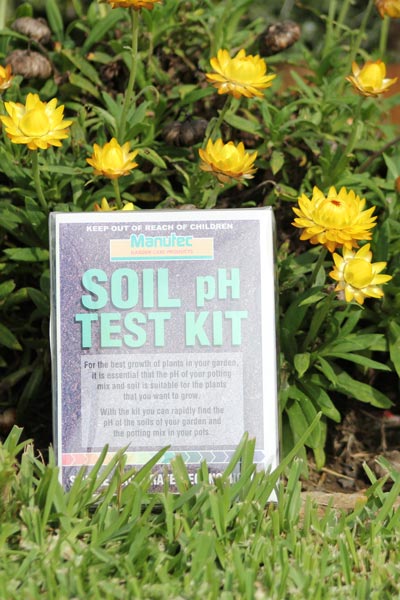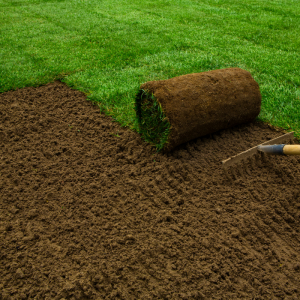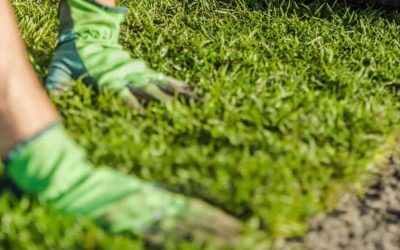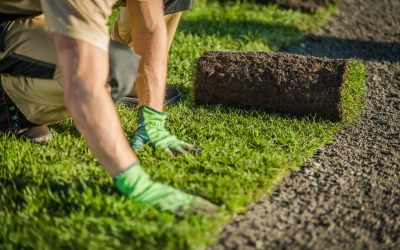Your Go-To Guide for Laying New Turf
jump to
Laying New Turf
Having a green lawn where you can relax, play and enjoy is part of the Australian dream. So, it goes without saying that laying new turf is an exciting time.
There is a lot to consider when you’re laying a new lawn. Not just which lawn variety you should choose but also what preparation needs to be done before the turf even arrives and then how to lay your turf as well as the care it needs once it’s laid.
This is your go-to guide for everything you need to know about laying a new lawn. We’ll discuss how to work out how much turf you’ll need, how to clear the site area, how to prepare the soil for a new lawn, how to lay your new turf and the immediate care required afterwards.
When is it the right time to lay a new lawn?
Luckily, you can install a new lawn any time of the year. However, there are benefits and drawbacks for laying your new lawn in each season.
Spring: This is the ideal time to lay your new lawn. You’ll find that your new lawn will establish itself quickly and won’t need as much water as in summer. However, if you are laying your lawn in late spring, you may still need to water your lawn more as it grows its root system.
Summer: Although a new lawn will grow very quickly during summer, it will require a huge amount of water to ensure it doesn’t dry out in the heat. Not only will your lawn need more water to maintain its growth, but you will lose more to evaporation.
Autumn: Autumn is the best time to lay a new lawn if you’re conscious about how much water you will need to use. The weather won’t be too cold, and your new lawn will have time to grow its root system before it goes into semi-hibernation during winter.
Winter: Even though lawns go into semi-hibernation during winter, you can still lay a lawn at this time. All it means is that your new lawn won’t establish its roots until winter is over. This does mean that your water requirements are almost halved, and you won’t need to mow until spring.
So, if you’re worried about how much water you will need to use, autumn or winter may be the best time for you. Or, if you’d rather have a luscious green lawn in time for summer BBQs, spring may be ideal for you. However, now is just as good a time as any.
Click here to choose the lawn variety that’s best for you
How much turf will I need for my yard?
So, you’ve chosen what turf variety you’d like and when you’d like to install it. The next step is to work out how much you will need.
Calculating your lawn area used to mean using a bunch of math formulas that we thought we’d left behind us in high school. Now, however, you can just enter the data in our lawn calculator, and it will do all the hard stuff for us.
But first, the part that we need to do:
- Break up your yard into rectangles and triangles
- Measure the length of each side of these shapes
- Put shape dimensions into our calculator
And there you have it, easy peasy!
We do recommend that you add 5% to your order. This is to make sure you’ll be able to cover any irregular shapes or for cuttings. We don’t want you to be almost finished and have a bare patch.
What is the best way to properly clear the site?
This one requires a bit of planning. Before you can install new turf, you need to make sure any unwanted plants, rocks or other bits of debris are cleared.
Rocks and other bits and pieces can often just be scooped up with a shovel. Weeds, however, can be quite a daunting task. The easiest thing to do is to spray the area with weed killer. Make sure you do this at least 14 days before you plan to lay your new lawn.
Will my current soil be okay for my new lawn?
Soil is incredibly important for any lawn, especially when it is trying to establish itself. Soil provides essential nutrients as well as water and air to your lawn’s roots. Depending on the quality of your current soil, you may need to improve it or adjust the soil type.

To check if you need to improve your soil’s quality, you can complete a pH test. These are relatively simple and will indicate how alkaline or acidic your soil is. Most varieties of warm-season grasses prefer a pH level between 6 and 7.
If your soil level is below 6, it’s too acidic and can improved with lime or dolomite. However, if it’s above 7, your soil is too alkaline. Sulphur will successfully lower the pH level of your soil.
Depending on your grass variety, your new lawn will have a preference to the type of soil. Most warm-season grasses love a sandy loam. Generally, this means it is 70% sand and 30% soil. The sand component allows water and air to move more freely through the soil.
If your current soil has a high clay content, you should add Gypsum which will break down the clay. Or, you can add a sandy soil or organic soil mix if your current soil has not enough, or too much, sand.
How do I prepare my soil for the new turf?
In the days leading up to your turf installation there are a few things you should do to ensure your soil is ready for the new lawn. You need to make sure it isn’t compacted, is level and you should add topsoil.

For smaller areas you can use aerating shoes or a garden fork but for larger areas you might consider hiring a coring machine.
Adding a layer of topsoil will make sure that your soil level is a good height and will also provide your newly installed lawn will all the nutrients it needs.
The topsoil should be a sandy loam soil and we recommend adding 100 to 150mm across the area. However, if you want your turf to line up with your driveway or other hard surfaces, allow 30 to 40mm for the turf and then calculate the topsoil depth from there.
When working out how much topsoil you’ll need simply multiply the area of your yard by how much depth you’d like. For example, I want 125mm of topsoil across my 30m2 yard. I will need 3750mm of soil.

The day before your turf is delivered you should thoroughly water your soil so that it has a degree of moisture in it. By doing it the day before, you give the soil time to soak it up and be ready to welcome the grass the next day.
What is the best way to lay my new turf?
Finally, everything you’ve been preparing for has come to this. Your new turf has been delivered and it’s ready to be installed.
Find the longest edge of your yard, it might be the driveway, a fence or a path and roll out your turf along this. Double check that all edges are butted up closely to each other but aren’t overlapping.
After you’ve completed this first strip, lay out the next one in a brick pattern. By staggering the edges, you’ll reduce any water erosion or risk of dry patches. Continue with a staggered brick pattern for the rest of the turf laying process.
If you’re laying turf around any odd shapes such as a tree or garden beds, simply cut the turf roll with a sharp knife or spade to the shape you need.
Once you’ve laid everything, step back and check for any air pockets. Smoothing these out will make sure there is good contact between the turf roots and soil.
If you’re laying turf around any odd shapes such as a tree or garden beds, simply cut the turf roll with a sharp knife or spade to the shape you need.
Once you’ve laid everything, step back and check for any air pockets. Smoothing these out will make sure there is good contact between the turf roots and soil.
I’ve laid my new turf, what now?
A new lawn will need some immediate care in order to give it the best chances at establishing its roots.
The first thing you should do is water your lawn. It will need to be soaked for the first day. After the first day, you should water every morning and afternoon, so the turf is kept moist for 14 days. In extremely hot and dry weather, you may need to water 4 to 5 times a day to keep the turf moist. However, depending on your water restrictions you may need to adjust this.
Your new lawn should start to establish its roots within the first 14 days and soon after you may notice that you can no longer lift the turf rolls. These roots will sprout from the existing sod and will look like thick white hairs. At this stage you can start to water every second day for the next 7 to 10 days as your turf fully establishes.
You should also fertilise your lawn 14 days after installation. This will feed your quickly growing lawn and should be done again every 8 weeks for the first 12 months.
Before you know it, you’ll be breathing in the fresh air and enjoying a warm day out on your new lawn. Did you know that all turf bought from Buy turf online’s comes with a 10-year warranty? If you have any questions or you’d like to make an order, feel free to contact us.

read more!
recent posts
Turf Sizes and Turf Rolls
The size of turf refers to the dimensions of the individual rolls or pieces of grass that make up your new lawn.
Soft Leaf Buffalo Grass
Find out why soft-leaf buffalo grass is such a popular lawn choice in Australia, the number 1 buffalo grass choice and how to look after a new soft-leaf buffalo lawn.
Your #1 Guide to Turf Underlay
To give your new lawn the best chance to grow and thrive in your garden, it’s important to give it the foundations it needs with quality turf underlay.
How to Mow a Slope: Tips for Maintaining a Sloped Lawn
Steep slopes can be hazardous if not approached with care, but with the right knowledge and equipment, you can achieve excellent results.









